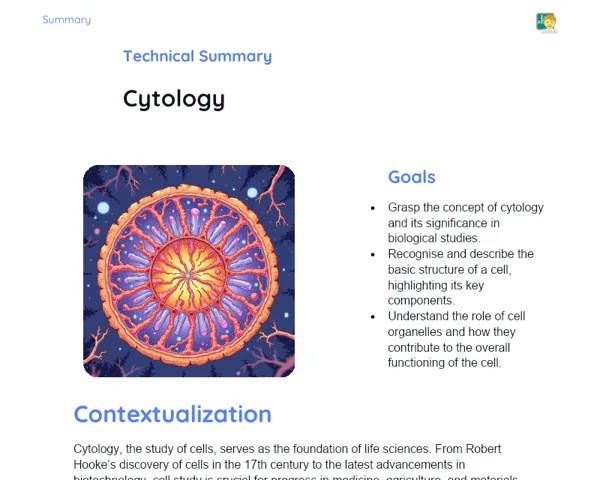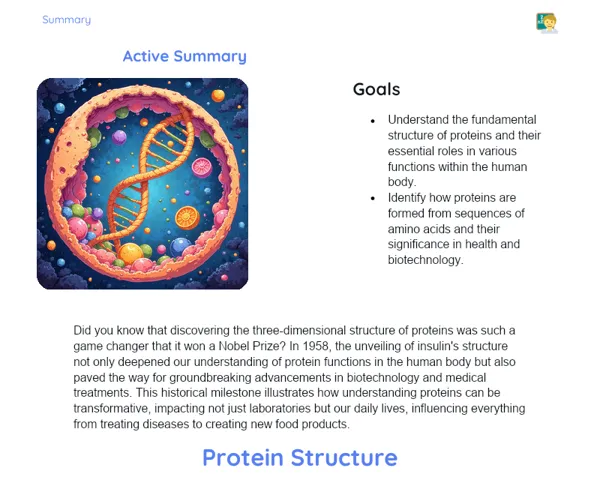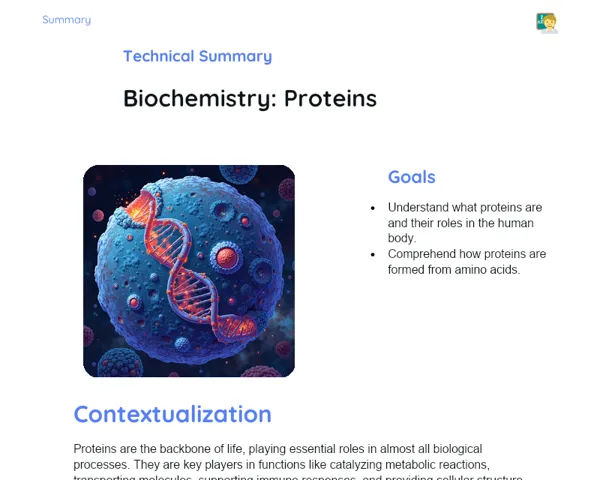Goals
1. Understand what protozoa and algae are, along with their characteristics and various types.
2. Learn about the major diseases caused by protozoa.
3. Develop practical skills in identifying and classifying protozoa and algae.
Contextualization
Protozoa and algae play an essential role in our ecosystems and overall health. These tiny organisms thrive in nearly every aquatic habitat and are critical for ecological processes, such as producing oxygen and breaking down organic matter. It's important to note that some protozoa are responsible for diseases that impact millions worldwide, such as malaria and Chagas disease. In addition, algae are utilized in making everyday products like ice cream and cosmetics due to their thickening and stabilizing properties. Protozoa also have significant applications in medical research, helping scientists better understand diseases and develop new treatments.
Subject Relevance
To Remember!
Protozoa
Protozoa are single-celled organisms that belong to the Protista kingdom. They can inhabit various aquatic and terrestrial environments and play crucial roles in ecosystems, including organic matter decomposition and serving as a part of the food chain. Some protozoa can cause diseases in humans and other animals.
-
They are unicellular and eukaryotic.
-
They can exist as free-living or parasitic forms.
-
Reproduction can happen through asexual or sexual means.
-
They are key players in the decomposition of organic matter.
-
Some protozoa are responsible for diseases like malaria and Chagas disease.
Algae
Algae are photosynthetic organisms usually classified under the Plantae kingdom but often included in the Protista kingdom. They thrive in aquatic and damp environments and are foundational for producing oxygen and forming the base of the aquatic food chain. Algae have significant ecological and commercial value, being utilized in food production, biofuels, and various industrial products.
-
They are capable of photosynthesis and can be unicellular or multicellular.
-
They thrive in aquatic and moist habitats.
-
They form the basis of the aquatic food web.
-
They produce oxygen via photosynthesis.
-
They are employed in the food industry and are a source of biofuels.
Diseases Caused by Protozoa
Protozoa can be responsible for several serious diseases in humans and animals, often transmitted through insect bites or contaminated food and water. Studying these diseases is critical for developing vaccines and treatments that can save lives.
-
Malaria: caused by the protozoan Plasmodium, spread by Anopheles mosquitoes.
-
Chagas disease: caused by Trypanosoma cruzi, transmitted by the triatomine bug.
-
Giardiasis: caused by Giardia lamblia, often from contaminated water or food.
-
Amebiasis: caused by Entamoeba histolytica, transmitted through contaminated food or water.
-
Leishmaniasis: caused by Leishmania, transmitted by sandflies.
Practical Applications
-
Biofuel Production: Algae are being utilized to generate biofuels, a sustainable substitute for fossil fuels.
-
Drug Development: Studies on protozoa contribute to medications and vaccines against maladies like malaria and Chagas disease.
-
Food Industry: Algae serve as stabilizers and thickeners in various food items like ice creams and sauces.
Key Terms
-
Protozoa: Unicellular, eukaryotic organisms that can be free-living or parasitic.
-
Algae: Photosynthetic organisms that may be unicellular or multicellular.
-
Malaria: A disease caused by the protozoan Plasmodium, transmitted via Anopheles mosquitoes.
-
Chagas disease: A disease caused by Trypanosoma cruzi, spread by the triatomine bug.
-
Biofuels: Fuels derived from living organisms, such as algae.
Questions for Reflections
-
Why is studying protozoa and algae important for public health?
-
How can knowledge about algae enhance environmental sustainability?
-
In what ways can biotechnology leverage protozoa for new medical treatments?
Practical Challenge: Building an Aquatic Microecosystem
This mini-challenge is designed to solidify your understanding of protozoa and algae through the creation and analysis of an aquatic microecosystem.
Instructions
-
Gather materials: small aquariums or cut PET bottles, water samples from a lake or river, stones, aquatic plants, microscopes or magnifying glasses, and notebooks for observations.
-
Construct your microecosystem by adding stones and aquatic plants to the lake or river water inside the aquarium or PET bottle.
-
Utilize the microscope or magnifying glass to study the protozoa and algae present in the water sample.
-
Document your observations in your notebook, identifying the different types of protozoa and algae and their interactions.
-
Share your findings with classmates and prepare a short presentation on your observations and conclusions.



